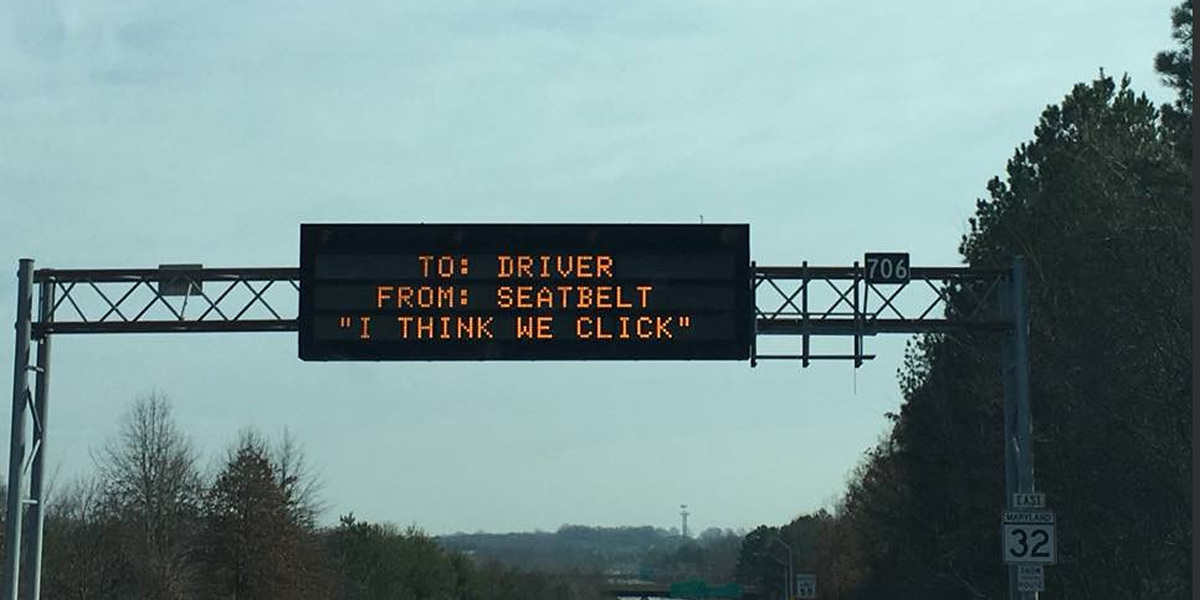
“To: Driver, From: Seatbelt,” the sign over interstate 97 read on Valentine’s Day. “I think we click.” This is just one of many overhead signs we’ve noticed in recent years that add a tinge of irreverence to our otherwise frustrating commutes. We wondered who is responsible for these messages?
Turns out, it’s Joseph Sagal and his team at the office of Coordinated Highway Action Response Team (CHART).
“We realize a little bit of humor goes a long way,” Sagal said. “Ultimately what we’re trying to do is grab people’s attention and save lives. If this is a way that we can be innovative and creative, that’s what we’re trying to accomplish.”
CHART is under the umbrella of the Maryland Department of Transportation State Highway Administration (MDOT SHA) and these cleverly worded warnings are known technically as dynamic message signs (DMS), and have been on display for about three years.
There are 85 DMS signs across the state of Maryland with more appearing every year in strategically placed locations. Each message—humorous or not—is attached to specific safety campaigns that typically run a week at a time and can range from seatbelt safety to driving under the influence. Although the fun messages are eye catching, media relations manager of MDOT Charlie Gishclar says that during rush hour people are more interested in the important things like travel times and incident reports.
“People are relying on the barebones information, like if there’s a crash ahead,” he said. “During off-peak hours, it’s a great opportunity to grab the attention of drivers momentarily, just to get into the person’s head, to give them something to think about it.”
Messages like “there’s nothing super about jail” on Super Bowl Sunday and “only reindeer can fly, watch your speed” around Christmas appear on signs during holiday seasons or around large events to promote safe driving. But coming up with a meaningful, creative message can pose some challenges when there’s only three lines with 18 characters per line to work with.
“There are limitations with trying to do so much with so little,” Sagal said. “It’s like the original version of Twitter with 140 characters. You have to be very conscious about what we are saying and how much time we are taking the motorists’ eyes off the road.”
Sagal says his team has monthly brainstorm sessions to come up with new messaging ideas, and are inspired by the dozen other states around the county who fun similar campaigns. (A recent personal highlight for Sagal was the cheeky Valentine’s Day message).
By implementing this new style of safety initiatives over the last few years, the MDOT SHA has been trying to keep up with the times while stressing the importance of safety on the roadways.
“If we were to have this conversation 10 years ago, I was probably a little more geared towards traditional transportation engineering and highway safety messages,” he said. “We’ve really come to the point where we need to be innovative and think outside the box in an effort to provide awareness and education as safely as possible to our motorists.”
